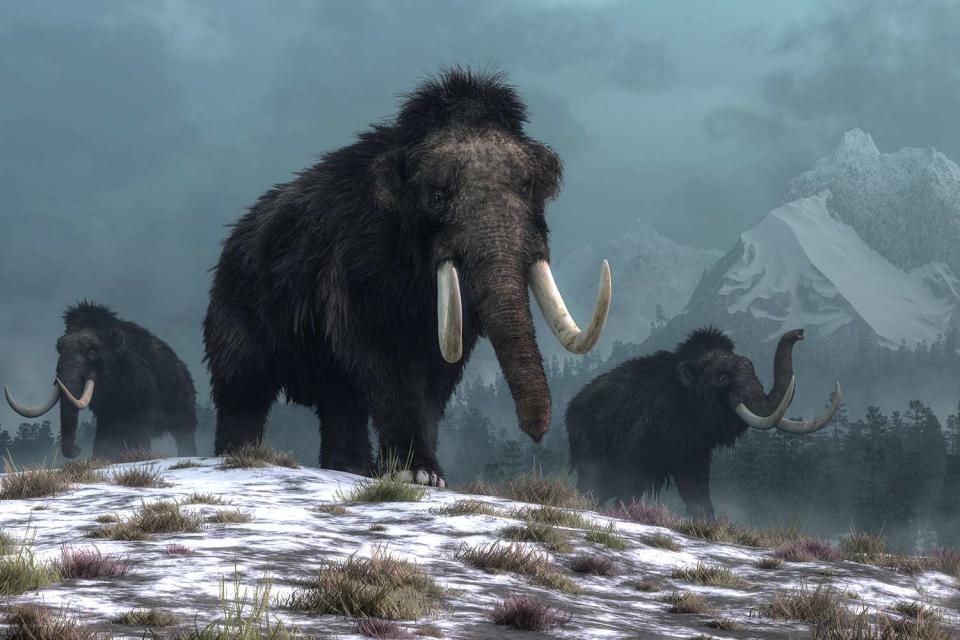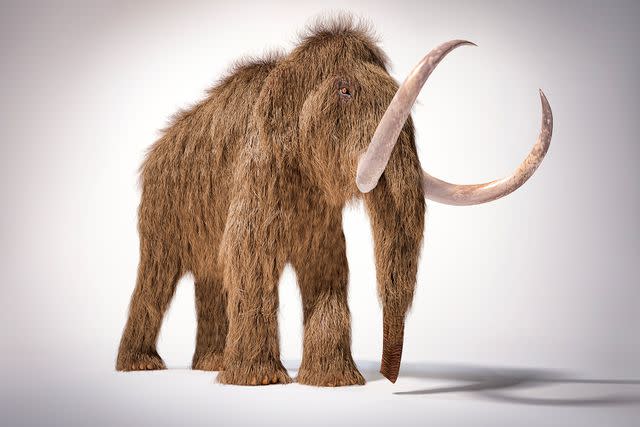Dallas Biotech Firm Takes 'Significant Step' Toward Recreating Woolly Mammoth from Asian Elephant Stem Cells
Colossal Biosciences is working on several de-extinction projects in the hopes of bringing back the woolly mammoth, the dodo bird and other extinct species

GettyA trio of woolly mammoths trudges over snow covered hills.
3D Rendering of woolly mammothsScientists are one step closer to bringing back one of the world’s fiercest mammals.
Dallas biotech company Colossal Biosciences has been working on several de-extinction projects in the hopes of bringing back the woolly mammoth and the dodo bird, among other extinct species, and has reached a major milestone in its efforts.
Colossal has derived induced pluripotent stem cells (iPSCs) from Asian elephants, the closest living relatives of mammoths, NPR reports. Now that the stem cells have been identified, scientists will be able to use cloning techniques to manipulate them in the hopes of birthing elephants with some of the mammoths’ key traits.
The company’s co-founder and a Harvard and MIT geneticist George Church told the outlet of the effort, “This is probably the most significant step in the early stages of this project.”
The animal Colossal is hoping to create through its de-extinction project is not so much a resurrection of the exact woolly mammoth that went extinct 4,000 years ago, but rather an elephant that is more resistant to cold, as mammoths were, and has most of the core biological traits that allowed it to survive in cold climates.
“We don't necessarily need to bring back a perfect genome of a mammoth, because we want one that has certain things that mammoths didn't have,” Charles told the outlet.
Related: Scientists Hope to 'Genetically Resurrect' Woolly Mammoths to Help Combat Climate Change
The stem cells hold such weight because they will allow researchers to “derive gametes,” which are crucial germ cells involved in reproduction, Eriona Hysolli, Colossal’s head of biological sciences and mammoth lead, told Live Science. “That's crucial over the longer term, because they can really hold the key to saving species.”
Developmental biologist and associate professor at the University at Buffalo Vincent Lynch similarly mused to the outlet, "The goal, I think, is to turn these iPSCs into sperm and eggs, which would allow for in vitro fertilization and, eventually, surrogacy.”
He clarified that to do so would be “pretty challenging” and involves methods that “haven’t been developed yet, but it is only a matter of time.”

GettyWoolly mammoth realistic 3d illustration
3D illustration of a woolly mammothRelated: Meatball Made with Woolly Mammoth DNA Created by Food Startup
As for how the iPSCs relate to conservation efforts, Hysolli told NPR, “These cells will benefit the elephant conservation community just as much as being engineered to bring back the woolly mammoth.”
However, some scientists disagree with Colossal’s focus on de-extinction given the staggering levels of extinction that remain ongoing. Gabriela Mastromonaco, senior director of wildlife science at the Toronto Zoo, called the work a “distraction.”
“There are so many species going extinct today. We're actually not going to be able to help any of them if we're thinking about the woolly mammoth,” she told NPR. “We need to focus on the species here today. Living animals versus fossils is really where our focus should be.”
Never miss a story — sign up for PEOPLE's free daily newsletter to stay up-to-date on the best of what PEOPLE has to offer, from celebrity news to compelling human interest stories.
For others, though, the advancement is an exciting sign with “enormous potential” for future conservation efforts.
"Producing induced pluripotent stems has proved to be very difficult for some species — notoriously the elephant," Oliver Ryder, director of conservation genetics at the San Diego Zoo Wildlife Alliance, told the outlet.
"It opens up new possibilities for conserving species' genetic diversity, preventing extinction and contributing to the sustainability of species.”
For more People news, make sure to sign up for our newsletter!
Read the original article on People.

 Yahoo Sport
Yahoo Sport 





































